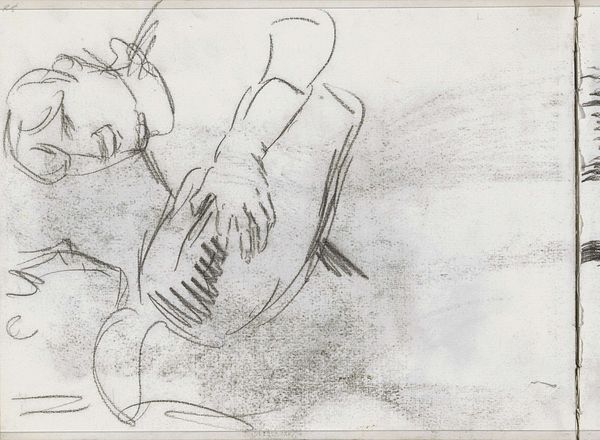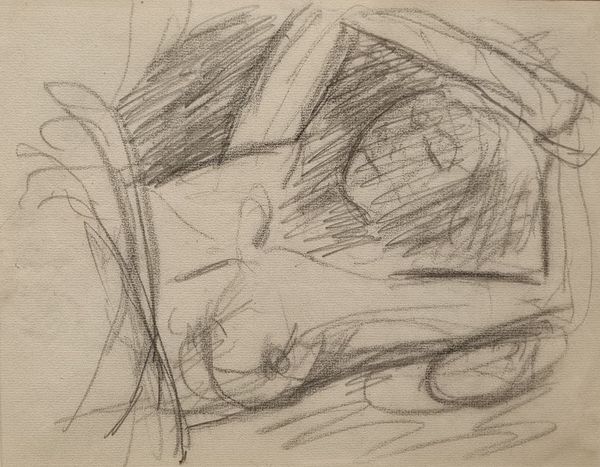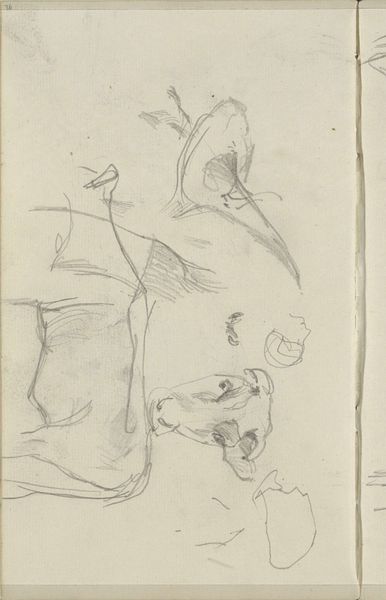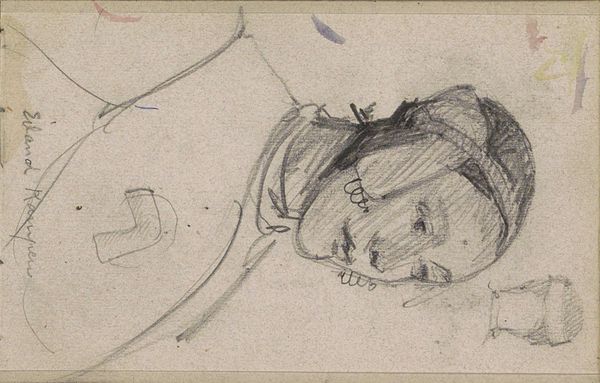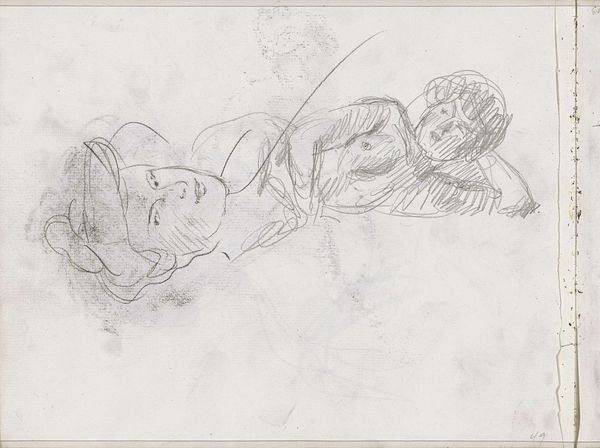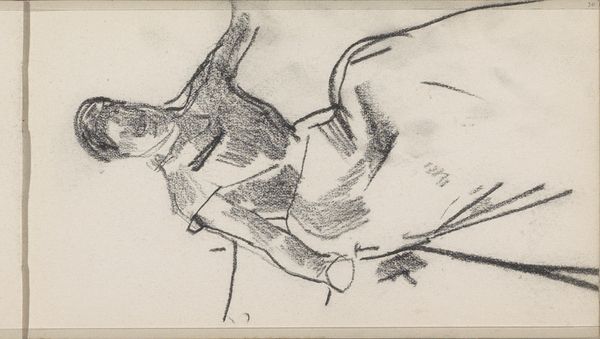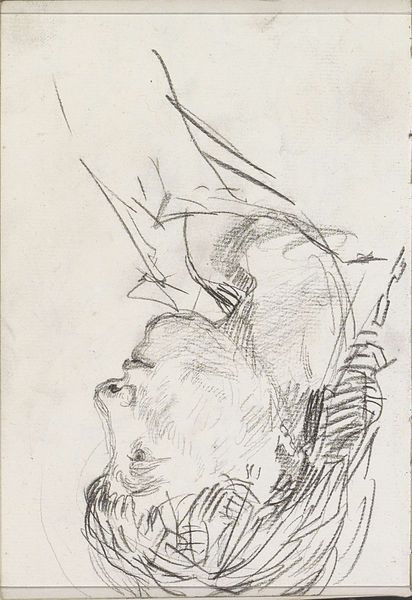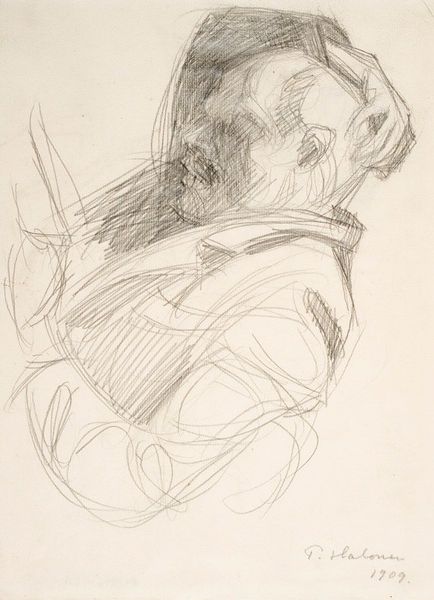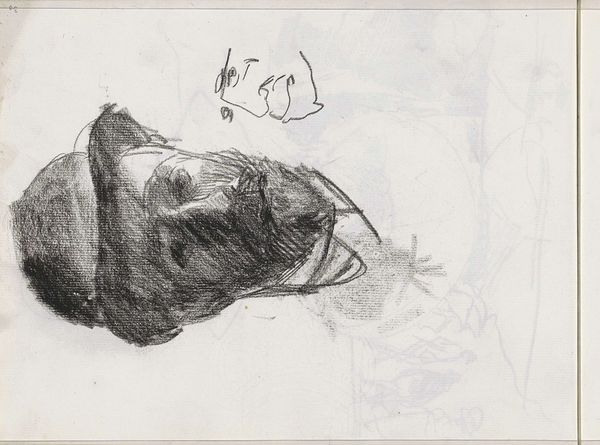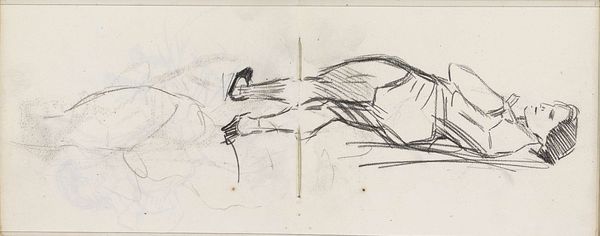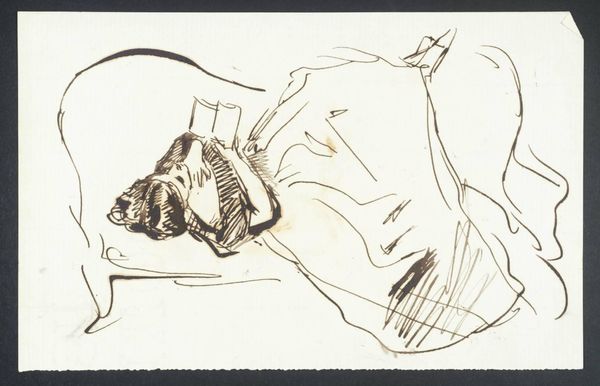
drawing, pencil
#
drawing
#
animal
#
pencil sketch
#
landscape
#
pencil
#
portrait drawing
#
realism
Dimensions: height 191 mm, width 114 mm
Copyright: Rijks Museum: Open Domain
Curator: Welcome. Before us is "Studies van een liggend hert," a work rendered in pencil by George Hendrik Breitner between 1873 and 1886. It resides here at the Rijksmuseum. Editor: It strikes me as a piece full of stillness and observation. There’s a rawness to the sketch, the lines quick and searching, not trying to romanticize, but capture something fleeting. Curator: Breitner’s realism is fascinating here. One sees him not merely depicting an animal, but truly trying to understand the very posture and presence of a deer through his careful observation and detail. Editor: I’m interested in the politics of realism during this period. Was Breitner's commitment a commentary? How was this seen amidst broader social and political anxieties in the late 19th century, considering debates around the representation of marginalized communities? Curator: The late 19th century saw movements towards naturalism and realism which held varying intentions. Realist approaches were driven, in part, by a societal shift towards democratization of subjects in painting, and some would argue that, by turning his eye towards humble subjects, Breitner challenges the artistic status quo. Editor: Precisely. The 'humble subject'. What’s particularly thought-provoking is that depictions of animals—particularly within the ‘natural world’—became loaded signifiers. Were these deer studies an innocent exploration or did they hint at human themes of vulnerability and the struggle for existence within a rapidly industrializing world? How might contemporary viewers have interpreted this imagery through the lens of shifting societal norms around humans relationship with animals? Curator: Such queries underscore the multi-layered resonance within works of this nature. They were executed during the shift of Realism, responding to those currents. Breitner places our perspective near that of a hunting observer; perhaps a reference to land politics? Editor: I appreciate you pointing this out because this interpretation can add critical layers to this dialogue. It reveals how something that appears so simple actually has an elaborate network that intertwines nature, observation, and social awareness, especially when it engages historical power dynamics and hierarchies. Curator: Indeed. Hopefully this dialogue allows the audience to look a little deeper into his world of vision and representation during Breitner's life. Editor: Yes, broadening our knowledge to look deeper and consider art from different vantage points that can encourage us to view it in a very interesting light.
Comments
No comments
Be the first to comment and join the conversation on the ultimate creative platform.
